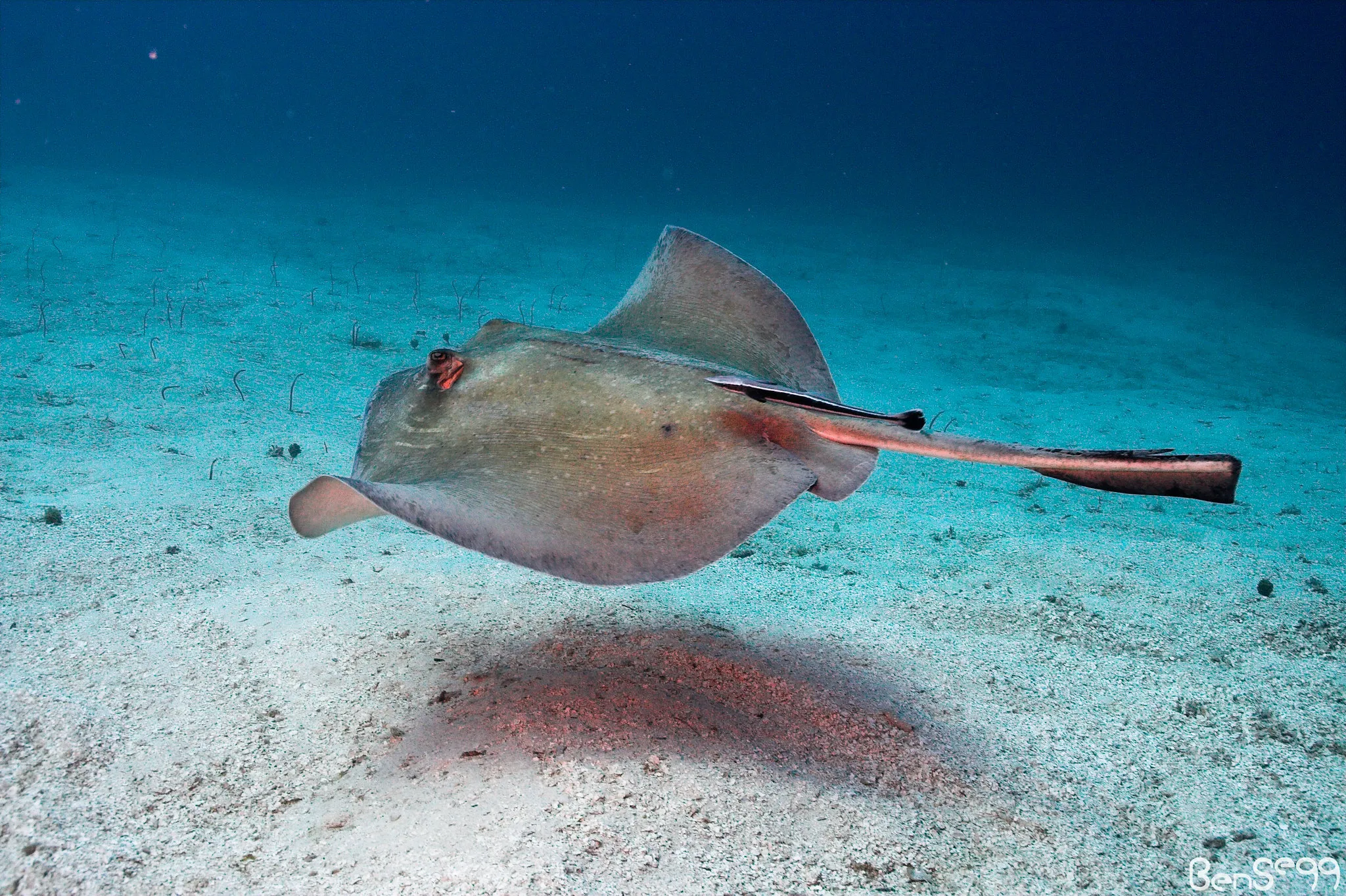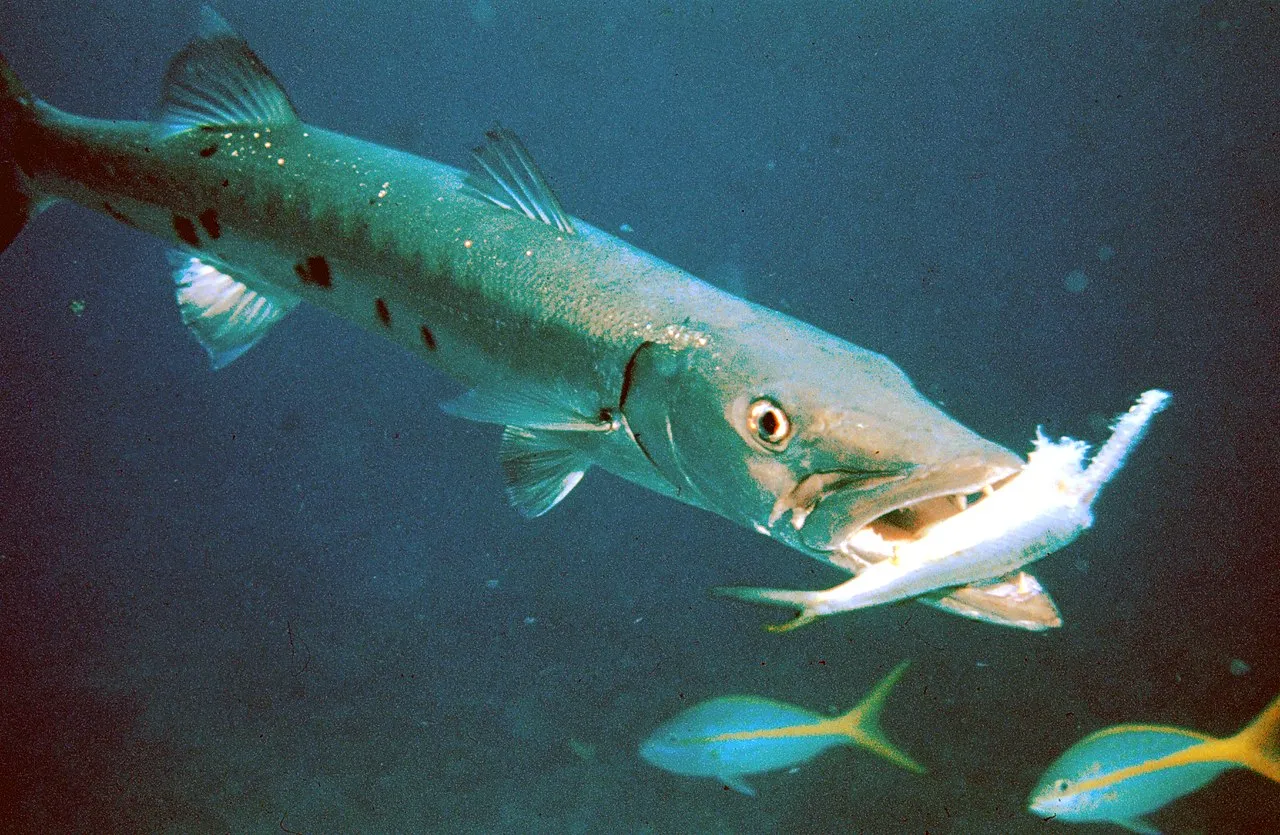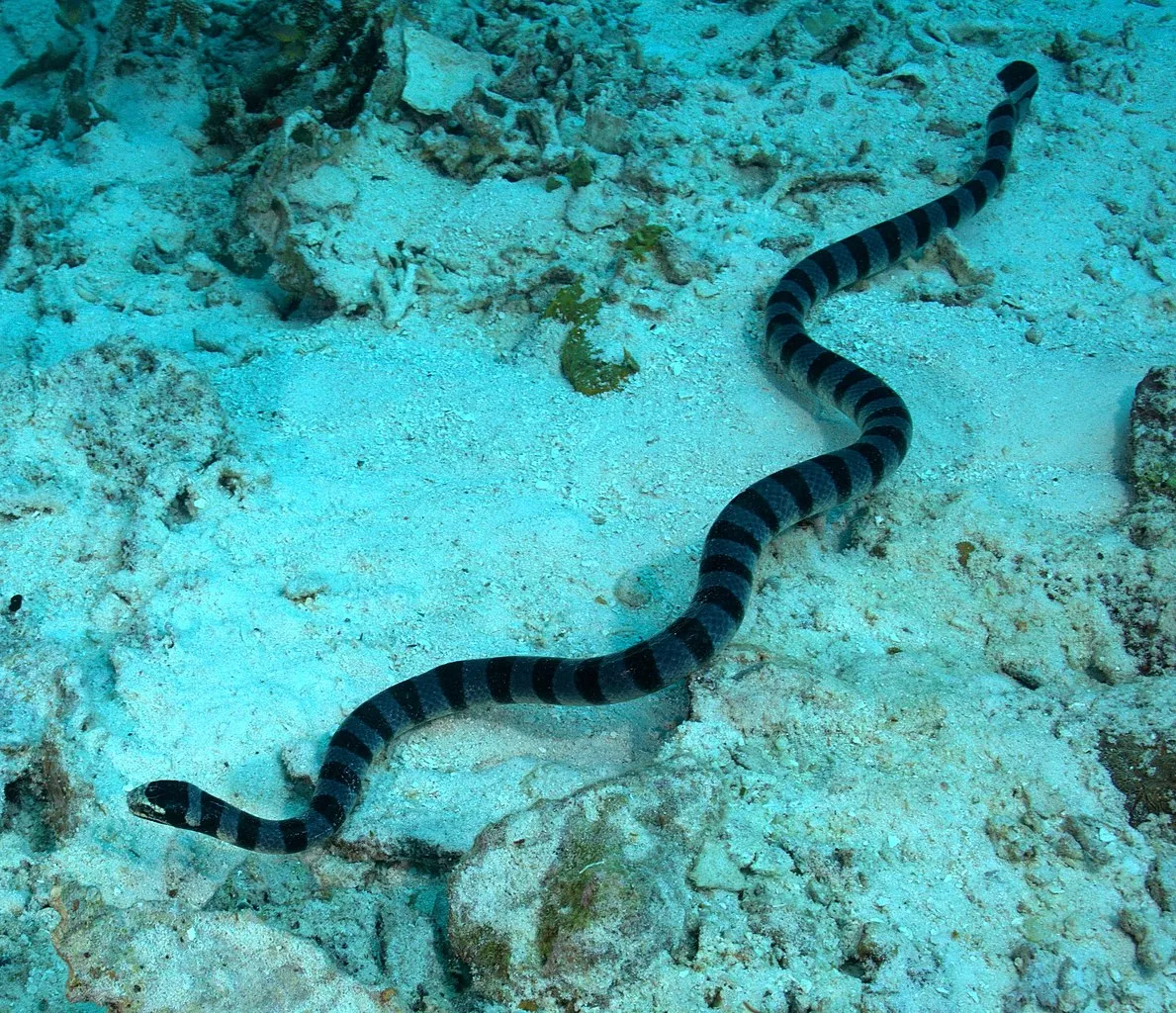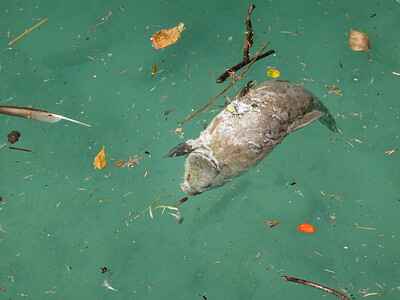5+ Tertiary Consumers in the Coral Reef and Their Characteristics
1. Stingray:

Stingrays are fascinating creatures that play a crucial role as tertiary consumers in coral reef ecosystems. These majestic creatures belong to the class Chondrichthyes, which includes cartilaginous fish like sharks and skates. Stingrays are characterized by their flattened bodies and long, whip-like tails armed with venomous spines, which they use for self-defense.
Ecological Role: As tertiary consumers, stingrays occupy the upper levels of the food chain in coral reef ecosystems. They primarily feed on a variety of benthic invertebrates such as mollusks, crustaceans, and small fish, which they locate using their keen sense of smell and electroreception. Their diet helps regulate the populations of their prey species, preventing overgrazing of algae and maintaining the balance of the reef ecosystem.
Habitat and Distribution: Stingrays are commonly found in shallow coastal waters and coral reef habitats around the world, preferring sandy or muddy bottoms where they can bury themselves partially to camouflage and ambush their prey. These habitats provide them with ample food sources and protection from predators.
Behavior and Adaptations: Stingrays are well-adapted to their environment, with specialized features that aid in their survival. Their flattened bodies allow them to glide effortlessly through the water, while their ventral mouths are perfectly suited for bottom feeding. They often rest on the seabed during the day, using their sandpaper-like skin to bury themselves and avoid detection by predators.
Reproduction: Stingrays reproduce through internal fertilization, with males using their claspers to transfer sperm to the female’s reproductive tract. Females give birth to live young, which are typically born fully developed and capable of independent swimming. This reproductive strategy ensures the survival of offspring in the often harsh and competitive marine environment.
Conservation Status: While stingrays are not typically targeted by commercial fisheries, they are sometimes caught incidentally as bycatch. Additionally, habitat degradation, pollution, and accidental entanglement in fishing gear pose significant threats to their populations. Conservation efforts focused on habitat protection, sustainable fishing practices, and public awareness are essential for ensuring the continued survival of stingrays and the health of coral reef ecosystems.
2. White-tipped Reef Shark:
The white-tipped reef shark, scientifically known as Triaenodon obesus, is a tertiary consumer within coral reef ecosystems, playing a vital role in maintaining the balance of marine food webs.
Ecological Role: As a tertiary consumer, the white-tipped reef shark feeds primarily on smaller reef fish, crustaceans, and cephalopods. Their diet helps regulate the populations of these prey species, preventing overgrazing of algae and maintaining the health of coral reef ecosystems. Additionally, they also scavenge on carrion, further contributing to nutrient recycling within the ecosystem.
Habitat and Distribution: White-tipped reef sharks are commonly found in shallow coastal waters and coral reef habitats throughout the tropical Indo-Pacific region. They prefer areas with high coral cover and abundant prey, such as reef slopes, channels, and lagoons. These sharks are well-adapted to the reef environment, utilizing caves, ledges, and crevices for shelter during the day and venturing out to hunt at night.
Behavior and Adaptations: These sharks are nocturnally active hunters, using their keen senses of smell, sight, and electroreception to locate prey in the dark. Their slender bodies and agile swimming abilities make them efficient predators in the complex terrain of coral reefs. White-tipped reef sharks are known for their distinctive white-tipped dorsal fins, which are thought to aid in camouflage and communication within their social hierarchy.
Reproduction: White-tipped reef sharks reproduce via internal fertilization, with females giving birth to live young after a gestation period of approximately 10-12 months. They typically give birth to 1-6 pups per litter in shallow nursery areas, where the young are less vulnerable to predation. This reproductive strategy allows for the survival of offspring in the relatively hazardous marine environment.
Conservation Status: While white-tipped reef sharks are not specifically targeted by commercial fisheries, they are often caught incidentally as bycatch in gillnets, longlines, and other fishing gear. Additionally, habitat degradation, pollution, and overfishing of their prey species pose significant threats to their populations. Conservation measures such as marine protected areas, sustainable fishing practices, and public education are crucial for the conservation of white-tipped reef sharks and the preservation of coral reef ecosystems.
3. Horn Shark:
The horn shark (Heterodontus francisci) is a species of shark that occupies the role of a tertiary consumer in coral reef ecosystems, contributing to the intricate balance of marine food webs.
Ecological Role: As a tertiary consumer, the horn shark primarily feeds on a variety of benthic invertebrates such as crabs, sea urchins, and mollusks. By preying on these organisms, horn sharks help regulate their populations, preventing overgrazing of algae and maintaining the health of coral reef habitats. Additionally, they also consume small fish and scavenged carrion, further contributing to nutrient cycling within the ecosystem.
Habitat and Distribution: Horn sharks are typically found in rocky reef habitats along the eastern Pacific coast, ranging from southern California to the Gulf of California. They prefer shallow waters with rocky substrates, where they can hide among crevices and rocky outcrops during the day and venture out to hunt at night. These sharks exhibit a limited range compared to other shark species, often remaining in specific home ranges throughout their lives.
Behavior and Adaptations: Horn sharks are nocturnally active predators, using their specialized dentition and powerful jaws to crush and consume hard-shelled prey such as crustaceans and mollusks. They possess blunt, flattened teeth in the front of their mouths for grasping and piercing prey, as well as molar-like teeth in the back for grinding and crushing shells. This dental adaptation allows them to efficiently exploit their preferred food sources within the reef environment.
Reproduction: Horn sharks reproduce via internal fertilization, with males using claspers to transfer sperm to the female’s reproductive tract. Females typically lay spiral-shaped egg cases, known as mermaid’s purses, which are anchored to the seafloor and provide protection for the developing embryos. After a gestation period of approximately 9-12 months, the eggs hatch, and the young sharks emerge fully developed and capable of independent swimming.
Conservation Status: Horn sharks face threats from habitat degradation, pollution, and overfishing, particularly in heavily urbanized coastal areas where their rocky reef habitats are at risk of destruction. Additionally, their slow reproductive rate and limited dispersal ability make them vulnerable to population declines. Conservation efforts focused on habitat protection, sustainable fishing practices, and monitoring of population trends are essential for the conservation of horn sharks and the preservation of coral reef ecosystems.
4. Barracuda:

Barracudas are formidable predators that occupy the role of tertiary consumers in coral reef ecosystems, contributing to the complex dynamics of marine food webs.
Ecological Role: As tertiary consumers, barracudas play a crucial role in controlling the populations of smaller reef fish, cephalopods, and crustaceans. Their predatory behavior helps maintain the balance of the reef ecosystem by preventing overgrazing of algae and regulating the abundance of prey species. Barracudas are known for their swift hunting tactics and impressive speed, allowing them to efficiently capture prey in the open water and along the edges of coral reefs.
Habitat and Distribution: Barracudas are commonly found in tropical and subtropical waters worldwide, including coral reef habitats throughout the Caribbean Sea, Indo-Pacific region, and other tropical oceanic areas. They inhabit a variety of coastal and offshore environments, including coral reefs, seagrass beds, and rocky shorelines, where they can exploit a diverse range of prey and seek refuge from predators.
Behavior and Adaptations: Barracudas are highly adapted predators, with streamlined bodies, sharp teeth, and powerful jaws designed for rapid acceleration and efficient prey capture. They often hunt in schools or alone, using stealth and ambush tactics to surprise their prey. Barracudas are known for their ability to strike with incredible speed and precision, making them formidable hunters in both open water and reef environments.
Reproduction: Barracudas reproduce via external fertilization, with females releasing eggs into the water column and males releasing sperm to fertilize them. After fertilization, the eggs hatch into larvae, which drift in the ocean currents before settling into suitable habitats as juveniles. Barracudas have high fecundity, producing large numbers of eggs to maximize the chances of offspring survival in the unpredictable marine environment.
Conservation Status: While barracudas are not specifically targeted by commercial fisheries, they are often caught incidentally in recreational and commercial fishing gear. Overfishing, habitat degradation, and pollution pose significant threats to their populations, particularly in heavily populated coastal areas. Conservation measures such as habitat protection, fisheries management, and marine protected areas are essential for the conservation of barracudas and the preservation of coral reef ecosystems.
5. Octopus:
Octopuses are fascinating cephalopods that occupy the role of tertiary consumers in coral reef ecosystems, contributing to the intricate food webs and ecological dynamics of marine environments.
Ecological Role: As tertiary consumers, octopuses play a crucial role in regulating the populations of small reef fish, crustaceans, and mollusks. Their predatory behavior helps control the abundance of prey species, preventing overgrazing of algae and maintaining the balance of the reef ecosystem. Octopuses are highly intelligent and adaptable predators, capable of using camouflage, mimicry, and tool use to capture prey and avoid predators.
Habitat and Distribution: Octopuses are found in a wide range of marine habitats, including coral reefs, rocky shorelines, and sandy substrates, throughout tropical and temperate waters worldwide. They are highly adaptable and can thrive in diverse environments, from shallow coastal waters to deep-sea habitats. Octopuses are adept at finding shelter in crevices, caves, and other hiding spots where they can rest during the day and venture out to hunt at night.
Behavior and Adaptations: Octopuses possess a range of unique adaptations for hunting and survival in the marine environment. Their soft bodies, eight arms, and flexible movements allow them to squeeze into tight spaces and capture prey with precision. Octopuses are also masters of disguise, capable of changing color, texture, and shape to blend in with their surroundings and avoid detection by predators. They use their powerful beak and venomous saliva to immobilize and consume prey, including crabs, fish, and shellfish.
Reproduction: Octopuses have complex reproductive strategies, with males using specialized arm structures called hectocotyli to transfer sperm to the female’s mantle cavity. Females lay large numbers of eggs, which are typically attached to the seafloor or hidden in crevices for protection. After hatching, the larvae drift in the water column before settling into suitable habitats as juveniles. Octopuses exhibit semelparity, meaning they reproduce only once in their lifetime before dying shortly after the eggs hatch.
Conservation Status: Octopuses face threats from overfishing, habitat destruction, and climate change, which can disrupt their reproductive cycles and reduce their availability as prey for other marine species. Conservation efforts focused on sustainable fishing practices, habitat protection, and ecosystem management are essential for the conservation of octopuses and the preservation of coral reef ecosystems.
6. Sea Snake:

Sea snakes are venomous reptiles that occupy the role of tertiary consumers in coral reef ecosystems, contributing to the complex dynamics of marine food webs.
Ecological Role: As tertiary consumers, sea snakes play a crucial role in controlling the populations of small fish, cephalopods, and crustaceans within coral reef habitats. Their predatory behavior helps regulate the abundance of prey species, preventing overgrazing of algae and maintaining the health of the reef ecosystem. Sea snakes are highly adapted to their marine environment, with streamlined bodies, paddle-shaped tails, and specialized adaptations for hunting and swimming.
Habitat and Distribution: Sea snakes are found in tropical and subtropical waters throughout the Indian and Pacific Oceans, including coral reef habitats, seagrass beds, and mangrove estuaries. They are particularly abundant in the warm waters of the Indo-Australian Archipelago, where they can be found in shallow coastal areas and offshore reefs. Sea snakes are well-suited to their aquatic lifestyle, with flattened bodies and valved nostrils that allow them to dive and forage for prey in the reef environment.
Behavior and Adaptations: Sea snakes are highly adapted predators, with specialized venom glands and fangs for capturing and immobilizing prey. They primarily feed on small fish and cephalopods, using their excellent eyesight and chemosensory abilities to locate prey in the water column and among coral formations. Sea snakes are efficient swimmers, capable of propelling themselves through the water with powerful undulating movements of their bodies and tails.
Reproduction: Sea snakes reproduce via internal fertilization, with males using specialized structures called hemipenes to transfer sperm to the female’s reproductive tract. Females give birth to live young, which are typically born fully developed and capable of independent swimming. Sea snakes exhibit a wide range of reproductive strategies, with some species giving birth to a single offspring at a time, while others produce litters of multiple offspring.
Conservation Status: Sea snakes face threats from habitat destruction, pollution, and accidental entanglement in fishing gear, which can lead to population declines and habitat fragmentation. Additionally, sea snakes are sometimes targeted for their skin and meat in certain regions, further exacerbating their conservation status. Conservation efforts focused on habitat protection, sustainable fishing practices, and public education are essential for the conservation of sea snakes and the preservation of coral reef ecosystems.
*Summary of Tertiary Consumers in Coral Reef Ecosystems:
Stingray:
-
Feeds on benthic invertebrates like mollusks and crustaceans.
-
Found in shallow coastal waters and sandy/muddy bottoms.
-
Uses electroreception and keen sense of smell for hunting.
-
Reproduces through internal fertilization, giving birth to live young.
White-tipped Reef Shark:
-
Predatory behavior regulates populations of smaller reef fish and crustaceans.
-
Inhabits coral reefs in the Indo-Pacific region.
-
Nocturnally active hunter with keen senses and swift swimming abilities.
-
Reproduces via internal fertilization, giving birth to live young.
Horn Shark:
-
Feeds on benthic invertebrates like crabs and sea urchins.
-
Found in rocky reef habitats along the eastern Pacific coast.
-
Nocturnal predator with specialized dentition for crushing hard-shelled prey.
-
Reproduces via internal fertilization, laying spiral-shaped egg cases.
Barracuda:
-
Controls populations of smaller reef fish and cephalopods.
-
Wide distribution in tropical and subtropical waters.
-
Swift predator with streamlined body and sharp teeth.
-
Reproduces through external fertilization, releasing eggs into the water column.
Octopus:
-
Predatory behavior regulates populations of small fish and crustaceans.
-
Found in diverse marine habitats worldwide.
-
Intelligent predator capable of using camouflage and mimicry.
-
Reproduces via internal fertilization, laying large numbers of eggs.
Sea Snake:
-
Feeds on small fish and cephalopods.
-
Found in tropical waters of the Indian and Pacific Oceans.
-
Venomous predator with specialized adaptations for hunting and swimming.
-
Reproduces via internal fertilization, giving birth to live young.
| Tertiary Consumer | Key Points |
| Stingray |
– Feeds on benthic invertebrates like mollusks and crustaceans.
|
|
– Found in shallow coastal waters and sandy/muddy bottoms.
|
|
|
– Uses electroreception and keen sense of smell for hunting.
|
|
|
– Reproduces through internal fertilization, giving birth to live young.
|
|
| White-tipped Reef Shark |
– Predatory behavior regulates populations of smaller reef fish and crustaceans.
|
|
– Inhabits coral reefs in the Indo-Pacific region.
|
|
|
– Nocturnally active hunter with keen senses and swift swimming abilities.
|
|
|
– Reproduces via internal fertilization, giving birth to live young.
|
|
| Horn Shark |
– Feeds on benthic invertebrates like crabs and sea urchins.
|
|
– Found in rocky reef habitats along the eastern Pacific coast.
|
|
|
– Nocturnal predator with specialized dentition for crushing hard-shelled prey.
|
|
|
– Reproduces via internal fertilization, laying spiral-shaped egg cases.
|
|
| Barracuda |
– Controls populations of smaller reef fish and cephalopods.
|
|
– Wide distribution in tropical and subtropical waters.
|
|
|
– Swift predator with streamlined body and sharp teeth.
|
|
|
– Reproduces through external fertilization, releasing eggs into the water column.
|
|
| Octopus |
– Predatory behavior regulates populations of small fish and crustaceans.
|
|
– Found in diverse marine habitats worldwide.
|
|
|
– Intelligent predator capable of using camouflage and mimicry.
|
|
|
– Reproduces via internal fertilization, laying large numbers of eggs.
|
|
| Sea Snake |
– Feeds on small fish and cephalopods.
|
|
– Found in tropical waters of the Indian and Pacific Oceans.
|
|
|
– Venomous predator with specialized adaptations for hunting and swimming.
|
|
|
– Reproduces via internal fertilization, giving birth to live young.
|



